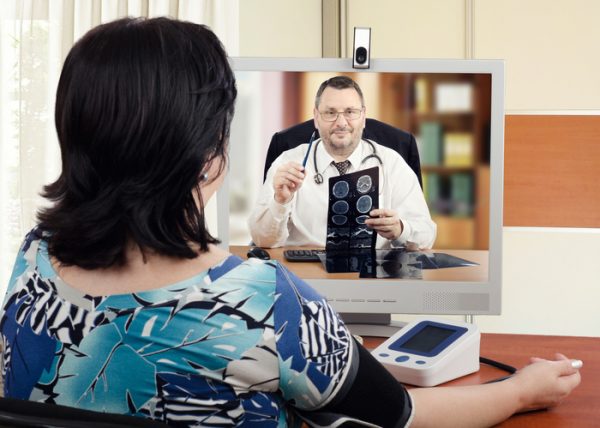
It is clear that many consumers are looking for this level of convenience. But even more valuable is when the convenience of telehealth is paired with the familiarity of your own provider. Using telehealth services, from video calls to a secure chat environment, to connect with your own doctor goes much further to improving health outcomes. Patients are more likely to have better experiences when they can see someone with whom they are familiar and who has a basic understanding of their health history, as their regular provider can help coordinate care based on his or her deep knowledge of the patient’s diagnosis.
Telehealth technology should not only lower the cost associated with individual visits and make accessing care more convenient, but it should also support access to care for those who are otherwise unable to receive it, keep patients regularly engaged with their own health, and, ultimately, improve health outcomes. The technology is now in place to help telehealth build stronger relationships with patients, not more fragmented ones.

Behavioral Health, Interoperability and eConsent: Meeting the Demands of CMS Final Rule Compliance
In a webinar on April 16 at 1pm ET, Aneesh Chopra will moderate a discussion with executives from DocuSign, Velatura, and behavioral health providers on eConsent, health information exchange and compliance with the CMS Final Rule on interoperability.
Providers benefit from telehealth, too. Telehealth positively impacts revenue because it limits cancellations and allows physicians to see more patients. It also provides a new level of flexibility by helping providers deliver the care their patients need, even when patients aren’t able to make it to an in-person visit.
Ultimately, a telehealth appointment is an excellent replacement for the alternative — no appointment at all. The key is to identify cost-effective ways for providers and patients to interact virtually and to identify clear scenarios for when to offer patients telehealth visits when an in-person visit is impossible or unnecessary. This way, telehealth does not replace the in-person visit, but rather enhances it.
There are three common scenarios for which technology can help ensure patients get the care they need and can simultaneously strengthen the patient-provider relationship:
- Filling cancellations. If a patient cancels an appointment or indicates they are unable to attend due to factors such as a lack of transportation, those who are eligible to meet via telehealth as determined by their appointment type/existing diagnosis can schedule a telehealth appointment with their provider instead. For patients, telehealth meetings are easy and often take just minutes. The meeting is initiated from the provider while a meeting link is sent to the patient as a text message, and no downloads are needed from the patient’s side. Once the meeting is completed, the room is deleted and the recording is exported and stored in the patient records.
- Post-op check-ins. Providers typically need to check in with patients one or two days after a surgical procedure, but there isn’t always a need to physically see them. Telehealth lends itself perfectly to this situation because it gives patients and providers an avenue to quickly check in, allowing patients to ask any questions they might have, and helping providers make sure patients remain on their post-op regimen. It also saves the patient the hassle of driving to and from an in-person appointment.
- Specialists for rural patients. Many providers are giving patients telehealth access to key specialists without forcing them to make a costly and time-consuming journey. If a patient lives in rural Iowa, for example, they may not have easy access to a specialist that can help them with their specific situation. In this case, a local community center could bring the patient in for a telehealth “visit” with a specialist, who might be located in Chicago or another larger city. This again promotes increased access to care, as well as improved outcomes.

A Deep-dive Into Specialty Pharma
A specialty drug is a class of prescription medications used to treat complex, chronic or rare medical conditions. Although this classification was originally intended to define the treatment of rare, also termed “orphan” diseases, affecting fewer than 200,000 people in the US, more recently, specialty drugs have emerged as the cornerstone of treatment for chronic and complex diseases such as cancer, autoimmune conditions, diabetes, hepatitis C, and HIV/AIDS.
In the end, giving patients the ability to consult with their own physicians via telehealth makes their healthcare experience far more efficient and personalized. Telehealth keeps patients engaged in their own health throughout their journey and helps improve health literacy. This all combines to create better health outcomes across the board, and when that is the case, everybody wins.
Photo: verbaska_studio, Getty Images












